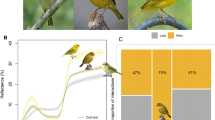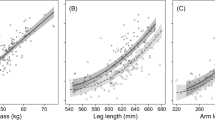Abstract
Female dominance is unusual among mammals and has been described in detail for only a handful of species. Here we present data on the frequency and outcome of dominance interactions in seven semi-free ranging and captive groups of blue-eyed black lemurs (Eulemur macaco flavifrons) housed at the Duke University Primate Center. We collected over 260 hours of focal data during which all occurrences of dominant-subordinate interactions were recorded. We collected data outside the typical breeding and birthing seasons for this species, thus eliminating possible confounding factors and increased aggression associated with these periods. We found that females were dominant over males in all seven groups, with females winning 99% of all dominance interactions.E. m. flavifrons used aggressive dominance (e.g. chase, cuff, bite) in 81% of all interactions, with the remainder of interactions being decided using social dominance (e.g. deference in the form of supplants or cowers). Older females were dominant over younger females in two out of three multi-female groups (in each case, younger females were daughters), and younger males (sons of the dominant female) received less aggression from females than did older males (n = 2 groups). Caging and group size appear to play a minimal role in the expression of female dominance. While confirmation must await further observations on free-ranging groups ofE. m. flavifrons, our data strongly suggest that this subspecies can be characterized as female dominant.
Similar content being viewed by others
References
Archie, E. A.;Digby, L. J. 1999. Juvenile dominance inEulemur macaco flavifrons: the influence of sex and maternal rank.Folia Primatol., 70: 277–281.
Colquhoun, I. C. 1997. A predictive socioecological study of the black lemur (Eulemur macaco macaco) in Northwestern Madagascar. Ph.D. thesis, Washington Univ., Saint Louis.
Digby, L. J. 1999. Targeting aggression in blue-eyed black lemurs (Eulemur macaco flavifrons).Primates, 40: 613–617.
Fornasieri, I.;Caubere, M.;Roeder, J-J. 1993. Social dominance and priority of access to drinking inLemur macaco.Aggressive Behav., 19: 455–464.
Fornasieri, I.;Roeder, J-J. 1992. Marking behaviour in two lemur species (L. fulvus andL. macaco): relation to social status, reproduction, aggression, and environmental change.Folia Primatol., 59: 137–148.
Freed, B. Z. 1996. Co-occurrence among Crowned Lemurs (Lemur coronatus) and Sanford’s Lemurs (Lemur fulvus sanfordi) of Madagascar. Ph.D. thesis. Washington Univ., St. Louis.
Gerson, J. S. 1995. The status ofEulemur macaco flavifrons at two localities in Northwestern Madagascar.Amer. J. Phys. Anthropol. (Suppl.), 20: 98.
Gerson, J. S. 2000. Social relationships in wild red-fronted Brown Lemurs (Eulemur fulvus rufus). Ph.D. thesis, Duke Univ., Durham, North Carolina.
Glander, K. E.;Rabin, D. P. 1983. Food choice from endemic North Carolina tree species by captive prosimians (Lemur fulvus).Amer. J. Primatol., 5: 221–229.
Hrdy, S. B. 1981.The Woman that Never Evolved. Harvard Univ. Press, Cambridge, Massachusetts.
Jolly, A. 1984. The puzzle of female feeding priority. In:Female Primates: Studies by Female Primatologists,Small,M. (ed.), Liss, New York, pp. 197–215.
Kappeler, P. M. 1990. Female dominance inLemur catta: more than just female feeding priority?Folia Primatol., 55: 93–95.
Kappeler, P. M. 1992. Female dominance in Malagasy primates. Ph.D. thesis, Duke Univ., Durham, North Carolina.
Kappeler, P. M. 1993a. Female dominance in primates and other mammals. In:Perspectives in Ethology, Vol. 10,Klopfer,P. H.;Thompson,N. S. (eds.), Plenum Press, New York, pp. 143–158.
Kappeler, P. M. 1993b. Variation in social structure: the effects of sex and kinship on social interactions in three lemur species.Ethology, 93: 125–145.
Kaufman, R. 1991. Female dominance in semifree-ranging black-and-white ruffed lemurs,Varecia variegata variegata.Folia Primatol., 57: 39–41.
Koenders, L. 1989. An eco-ethological comparison ofLemur fulvus andLemur macaco.J. Human Evol., 4: 187–193.
Koenders, L.;Rumpler, Y.;Ratsirarson, J.;Peyrieras, A. 1985.Lemur macaco flavifrons (Gray, 1867): a rediscovered species of primates.Folia Primatol., 44: 210–215.
Maestripieri, D. 1992. Functional aspects of maternal aggression in mammals.Can. J. Zool., 70: 1069–1077.
Maestripieri, D.;Megna, N. L. 2000. Hormones and behavior in rhesus macaque abusive and nonabusive mothers: 1. Social interactions during late pregnancy and early lactation.Physiol. Behav., 71: 35–42.
Pereira, M. E.;Kappeler, P. M. 1997. Divergent systems of agonistic behaviour in lemurid primates.Behaviour, 134: 225–274.
Pereira, M. E.;Kaufman, R.;Kappeler, P. M.;Overdorff, D. J. 1990. Female dominance does not characterize all of the Lemuridae.Folia Primatol., 55: 96–103.
Richard, A. F. 1987. Malagasy prosimians: female dominance. In:Primate Societies,Smuts,B. B.;Cheney,D. L.;Seyfarth,R. M.;Wrangham,R. W.;Struhsaker,T. T. (eds.), Univ. of Chicago Press, Chicago, pp. 25–33.
Sauther, M. L. 1993. Resource competition in wild populations of ringtailed lemurs (Lemur catta): implications for female dominance. In:Lemur Social Systems and Their Ecological Basis,Kapeller,P. M.;Ganzhorn,J. H. (eds.), Plenum Press, New York, pp. 135–151.
Taylor, L. L. 1986. Kinship, dominance, and social organization in a semi-free ranging group of ringtailed lemurs (Lemur catta). Ph.D. thesis. Washington Univ., Saint Louis.
Vick, L.;Pereira, M. E. 1989. Episodic targeting aggression and the histories ofLemur social groups.Behav. Ecol. Sociobiol., 25: 3–12.
Young, A. L.;Richard, A. F.;Aiello, L. C. 1990. Female dominance and maternal investment in Strepsirhine primates.Amer. Naturalist, 135: 473–488.
Author information
Authors and Affiliations
About this article
Cite this article
Digby, L.J., Kahlenberg, S.M. Female dominance in blue-eyed black lemurs (Eulemur macaco flavifrons). Primates 43, 191–199 (2002). https://doi.org/10.1007/BF02629647
Received:
Accepted:
Issue Date:
DOI: https://doi.org/10.1007/BF02629647




